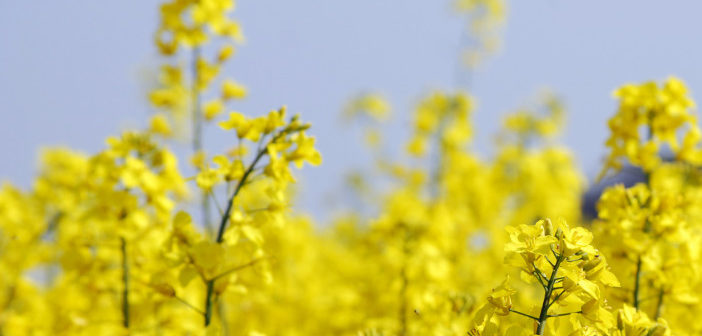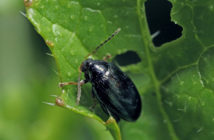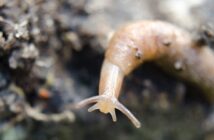After three years of trials, ADAS researchers have developed a deeper understanding of the relationships between PGRs, cabbage stem flea beetle (CSFB) larvae damage, nitrogen applications and the risk of oilseed rape crops (OSR) lodging.
In a season with many forward crops, some harbouring infestations of CSFB larvae, the advice could prove extremely valuable.
“We sought the answer to two main questions that haven’t been explored in detail before,” notes Pete Berry, ADAS Head of Crop Physiology. “To what extent do CSFB larvae weaken stems and make oilseed rape plants more prone to lodging? And to what extent can a PGR counteract the increased lodging risk created by CSFB?”
Caryx® reduces lodging risk
Replicated trials were conducted at two locations, close to ADAS sites in North Yorkshire and near King’s Lynn in Norfolk. Both OSR crops had moderate to high level of CSFB larvae in the stems.
In order to calculate the lodging risk, the ADAS team used a model developed in conjunction with wind engineers from Birmingham University. It takes into account stem strength, stem diameter and plant height.
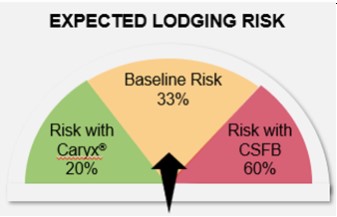 “We found that CSFB larvae reduce stem strength and stem diameter. Height may be slightly reduced but not enough to compensate for the decreased stem strength; the overall wind resistance is lower and the crop is more likely to lodge,” explains Dr Berry.
“We found that CSFB larvae reduce stem strength and stem diameter. Height may be slightly reduced but not enough to compensate for the decreased stem strength; the overall wind resistance is lower and the crop is more likely to lodge,” explains Dr Berry.
“The lodging risk of a typical undamaged crop was 33%, that rose to 60% where there was CSFB damage. The risk dropped to 20% with the use of Caryx®,” he says.
Caryx® had a positive effect on the wind resistance mainly by reducing plant height.
“Typically we see reductions of 10cm with Caryx® – that will reduce lodging risk substantially. We’ve also seen reductions of up to 20cm, how much you get, depends on the growing conditions at time of application but Caryx® is probably the most effective PGR for reducing height,” says Dr Berry.
Impact of nitrogen regimes on lodging risk
In spring 2022, ADAS explored the relative impacts of reduced nitrogen applications, in conjunction with Caryx®.
“The forward crop had a high CSFB pressure of 14 larvae/plant in the March, but was otherwise exhibiting normal development,” observes Dr Berry.
The standard nitrogen regime (in accordance with RB209 guidelines) saw a total of 140kg N/ha applied to the crop. 40kgN/ha was applied at the end of February, 60kgN/ha at green bud and 40kgN/ha at yellow bud. The experimental reduced nitrogen regime omitted the first dose.
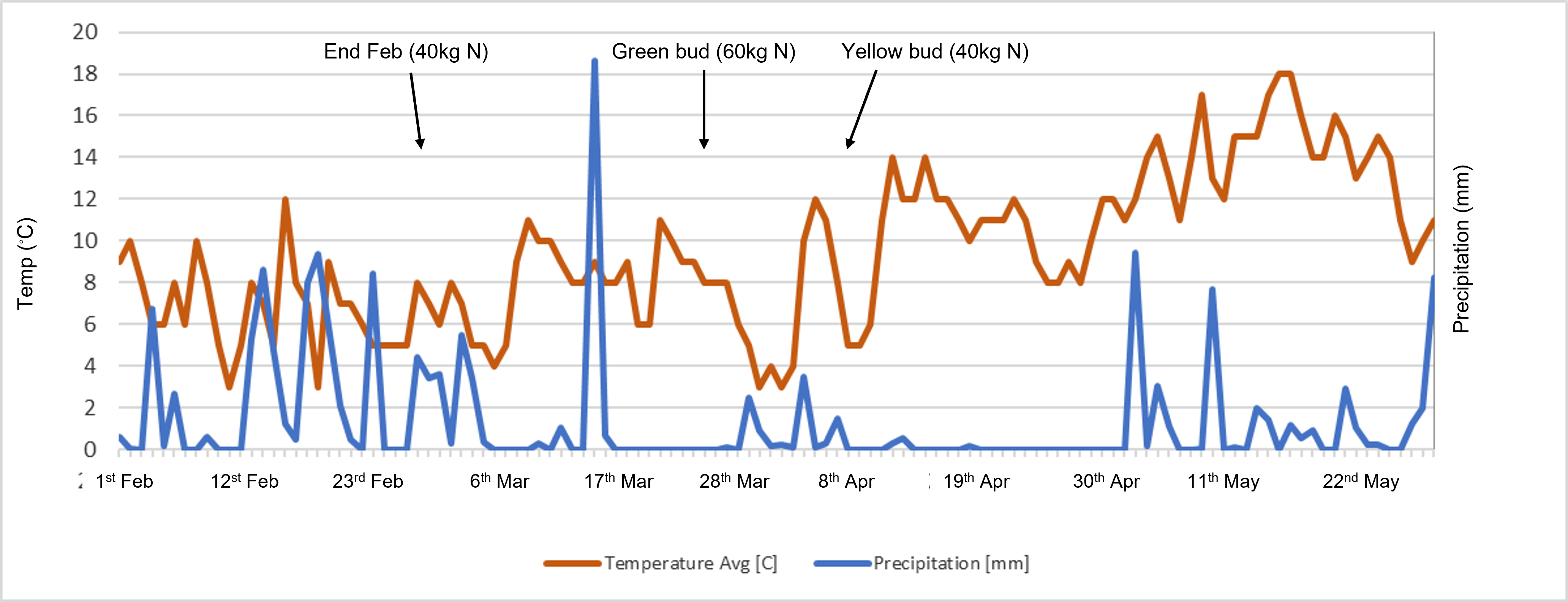
“In both trial cases, Caryx® significantly increased wind resistance and therefore reduced lodging risk.
“Despite previously finding reducing nitrogen can lower lodging risk, in this trial it did not. This may have been caused by the dry March and April, which may have affected uptake. Yield was reduced as expected,” summarises Dr Berry.
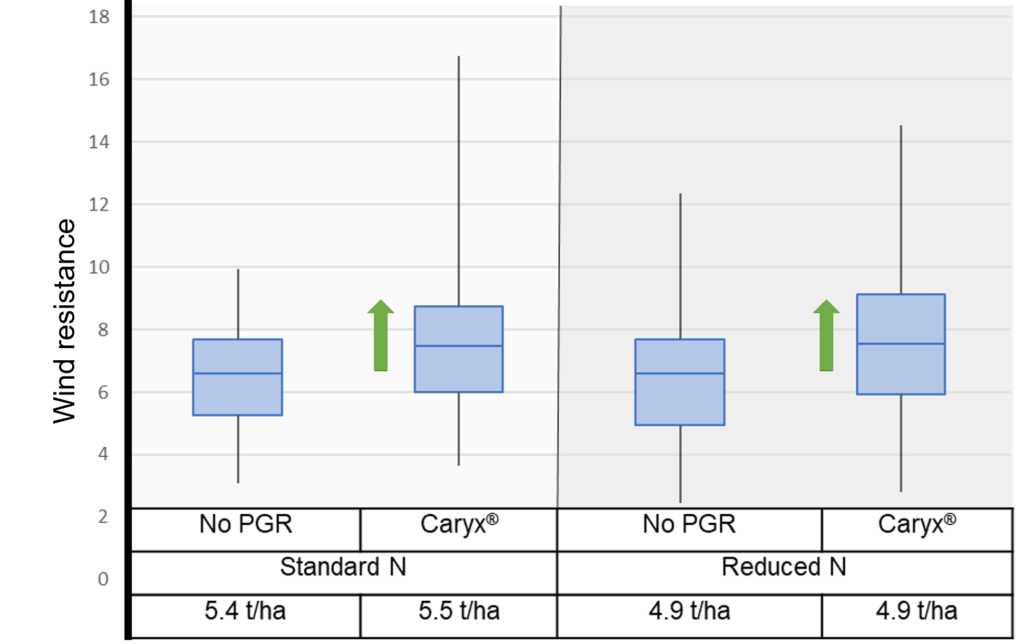
Trial conclusions
“While it’s true that CSFB larvae impact on lodging risk is mitigated by the fact that they also reduce the height of plants, it doesn’t outweigh the negative impact on stem strength. The net effect of CSFB larvae is increased lodging risk,” says Dr Berry.
Where there is a high lodging risk – whether due to canopy size, CSFB larvae damage or a combination of both – growers have two fertiliser options. The first split can be delayed which, Dr Berry says is particularly useful for those crops with a large canopy (a GAI of 2 or more) in February. A more drastic option is to reduce the overall rate of nitrogen but this may also reduce yield and can only really be justified where the lodging risk is very high and/or fertiliser prices make it a more viable option.
“Ultimately, the most consistent and effective way to reduce lodging risk comes from using a PGR such as Caryx®,” he says.
Managing lodging risk this spring
BASF agronomy manager, Matt Keane is positive about this year’s OSR crops, while there is some variation, a combination of factors encouraged good germination and establishment.
“The majority are further forward than we are used to. Growers held out for moisture, and generally, OSR was drilled into decent conditions. Generally, there was less adult CSFB damage this year. Hopefully, that means less larvae damage.
“Overall, it has been a mild winter so far and OSR crops are looking as good as perhaps they ever have,” he says.
Dr Berry agrees, adding: “Towards the end of January, start assessing size of canopy and start thinking about strategies for managing lodging risk and how much nitrogen fertiliser is required.
“If we do get another cold spell between now and spring, our advice is to base nitrogen rates on the pre-Christmas canopy size. The nutrients in those dying leaves will become available to the crop. For PGR guidance, it’s different. Those rates should be dependent upon the size of the canopy at, or just before, the start of stem extension.”
Optimising Caryx® applications
According to Mr Keane, any crops with a GAI above 0.8 at the end of February, just before stem extension, warrants an application of Caryx®. “Usually, we recommend application rates of 0.7L/ha to 1L/ha but where crops are very large, you can go up to 1.4L/ha,” he says.
Optimum timing of applications is green bud to yellow bud, when crops are actively growing. Mr Keane advises growers to aim for green bud rather than yellow when facing a larger canopy. “Also look at the nutrient status of that crop. Where the land is very fertile, consider upping the rate of Caryx®.
“Otherwise, it’s simply best practice. Use the same set-up as you would to get the best from fungicides,” he says.
“Lodging at flowering reduces yield by 20% – when lodged to 450 – and an ADAS survey showed the average lodged area is 31%..”
Receive the latest press releases from BASF via WhatsApp on your smartphone or tablet. Register for our news service at basf.com/whatsapp-news.
About BASF’s Agricultural Solutions division
Farming is fundamental to provide enough healthy and affordable food for a rapidly growing population while reducing environmental impacts. Working with partners and agricultural experts and by integrating sustainability criteria into all business decisions, we help farmers to create a positive impact on sustainable agriculture. That’s why we invest in a strong R&D pipeline, connecting innovative thinking with practical action in the field. Our portfolio comprises seeds and specifically selected plant traits, chemical and biological crop protection, solutions for soil management, plant health, pest control and digital farming. With expert teams in the lab, field, office and in production, we strive to find the right balance for success – for farmers, agriculture and future generations. In 2021, our division generated sales of €8.2 billion. For more information, please visit www.agriculture.basf.com or any of our social media channels.
Caryx® contains metconazole and mepiquat chloride. Caryx® is a registered trademark of BASF. © BASF 2021. All rights reserved.
About BASF
At BASF, we create chemistry for a sustainable future. We combine economic success with environmental protection and social responsibility. Around 111,000 employees in the BASF Group contribute to the success of our customers in nearly all sectors and almost every country in the world. Our portfolio comprises six segments: Chemicals, Materials, Industrial Solutions, Surface Technologies, Nutrition & Care and Agricultural Solutions. BASF generated sales of €78.6 billion in 2021. BASF shares are traded on the stock exchange in Frankfurt (BAS) and as American Depositary Receipts (BASFY) in the U.S. Further information at www.basf.com.

